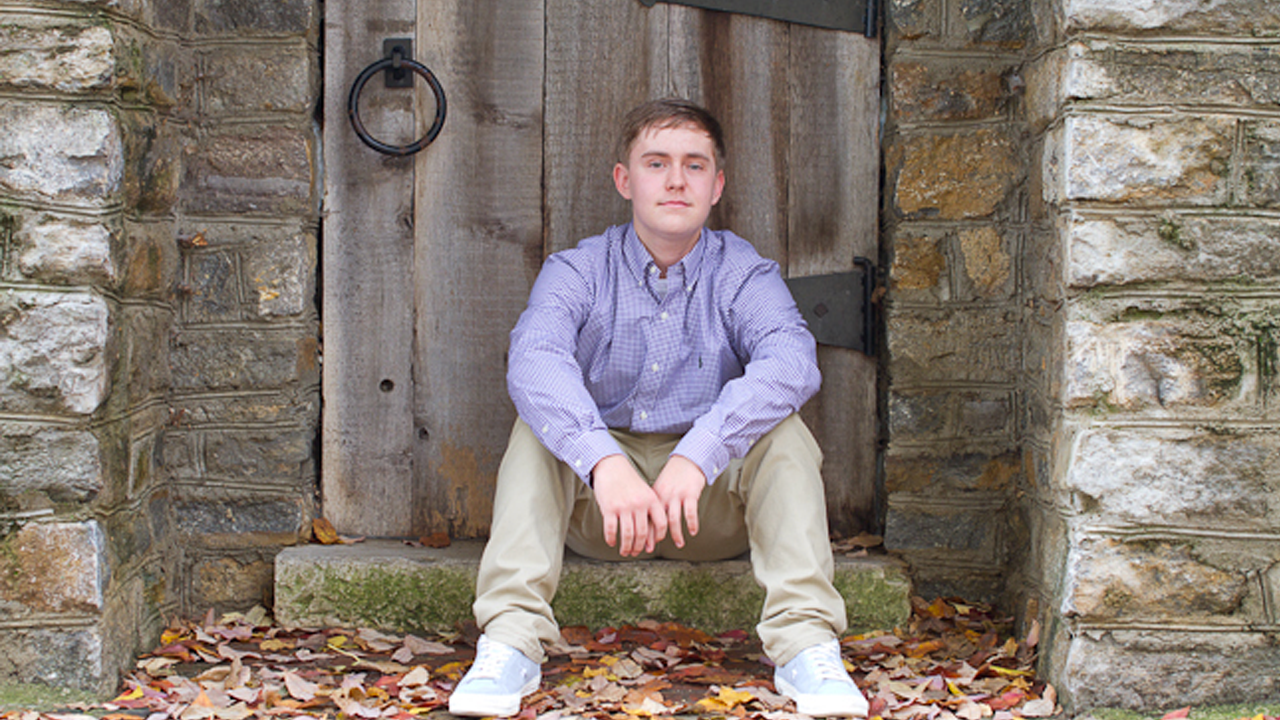Saturday mornings are for sleeping in when it comes to most college students. Normally, 20-year-old Devyn would be snoozing like the best of them, but this Saturday was different — he was home from school and had picked up a shift working with his stepbrother, Cameron. Devyn drove to the warehouse where they began their 8 a.m. shift like any other, until Devyn began to feel strange.
“I was lightheaded, dizzy and started to feel out of it in a dazed way,” said Devyn. “My brother noticed my face was drooping and when he asked me what was wrong, I was too confused to respond.”
Devyn could not feel the left side of his body and fell to the floor. Cameron dialed 911 and called their mother.
“That morning was a blur for all of us,” said Sarah, Devyn’s mother. “I spoke with a paramedic who was on the scene — he told me he was calling a Mobile Stroke Unit based on Devyn’s symptoms. When I heard that it was so hard to believe because Devyn had just turned 20. How could someone so young and healthy be having a stroke?”
Devyn’s father, Matt, had just started fishing in Felicity, Ohio, when he got the call that his son was having a stroke. “I get terrible reception out there — and I heard Cameron say Devyn was going to the hospital, but then my phone was cutting out. My mind was racing the whole time I drove back, wondering what was going on, was my son going to be OK?” said Matt. “It was the worst moment of my life.”
A stroke occurs when a blood clot blocks a blood vessel in the brain (called an ischemic stroke) or ruptures (called a hemorrhagic stroke). About 85% of all strokes in the U.S. are ischemic strokes. When this happens, it’s only a matter of minutes before brain cells begin to die and permanent damage occurs.
The paramedic on scene called the UC Health Mobile Stroke Unit, and his decision to hand over care was an integral link in the following chain of events for Devyn.
Mobile Stroke Care – A First in Greater Cincinnati
UC Health launched the region’s first and only Mobile Stroke Unit in August 2020. The Mobile Stroke Unit includes a critical care paramedic and registered nurse, an EMT and a CT technologist on board with a stroke team physician available through a telemedicine video link.
This expertise combined with the resources of our internationally recognized stroke team helps provide patients with the best possible care when a fast response is critical.
“I was the critical care nurse on the Mobile Stroke Unit that day,” said Sharon Walsh-Hart, clinical program developer of UC Health Air Care & Mobile Care at UC Medical Center. “As soon as Devyn was in our care, I started going through all my differentials — could this be a hemiplegic migraine, is this Bell’s palsy, does he have a history of clotting disorders in his family? By looking at him, though, it was obvious he was having a stroke.”
The Mobile Stroke Unit comes equipped with a computed tomography (CT) scanner to help diagnose a stroke as well as the ability to begin treatment before the patient arrives at the hospital.
Devyn had a CT scan and blood and glucose tests, and was started on IV fluids. “I never had any health issues in my life and there I was in the back of this ambulance being assessed for a stroke — it just didn’t make sense to me,” said Devyn.
On the Mobile Stroke Unit, the CT scans are sent through a private Wi-Fi system to UC Health to be examined. A stroke specialist evaluates the patient via a telemedicine video call, seeing and speaking to the patient — all while in route to the hospital. The goal is to find out what type of stroke is happening, and where, to determine whether the patient is a candidate for a revolutionary clot-busting medication called tPA.
Clot-Busting Medication, Leading-Edge Treatment
The only FDA-approved treatment for ischemic stroke is Alteplase IV r-tPA, also known as tissue plasminogen activator (tPA). It works by dissolving the clot and improving blood flow. If administered within three hours (and up to four-and-a-half hours in certain eligible patients), tPA may improve the chances of recovering from a stroke.
UC Health physicians and researchers paved the way for tPA. In order to become an approved stroke treatment, clinical trials were run to prove efficacy. More than 75% of the patients in the pilot three-center tPA trial were treated at UC Health and associated community hospitals.
These developments changed stroke from an untreatable human disease to an eminently treatable one, and throughout the world, prehospital and hospital treatment of all types of acute stroke began to change.
The stroke team physician reviewed the CT scan taken in the Mobile Stroke Unit and evaluated Devyn using the video monitor. To save precious time, Sharon started the tPA infusion in the Mobile Stroke Unit before they arrived at the Emergency Department.
The faster tPA is administered, the faster the blood clot will dissolve and open up the vessel to allow blood to flow back into the brain, preventing that part of the brain from dying.
“When it comes to stroke, we know every minute really does count,” said Christopher T. Richards, MD, medical director of the UC Health Mobile Stroke Program and assistant professor in the Department of Emergency Medicine at the University of Cincinnati College of Medicine. “The Mobile Stroke Unit allows us to get critical information in the prehospital setting. This helps in many ways: First, it allows us to quickly treat patients who are experiencing stroke. Additionally, if we diagnose a severe stroke that might benefit from a procedure to remove the blockage, the Mobile Stroke Unit will transport directly to a stroke center hospital that can treat complex stroke cases, which can shorten the patient’s time to treatment.”
“If we have the patient’s scans and tests in advance and we diagnose a ‘large vessel occlusion,’ sometimes those patients can go directly to the endovascular suite to have the blockage removed, even bypassing the Emergency Department,” said Dr. Richards.
Thankfully, tPA was already working wonders on Devyn’s clot. When he was initially picked up, Devyn was experiencing a severe stroke; when the mobile stroke team handed him over to the UC Medical Center Emergency Department, his stroke had lowered to the mild range.
“Devyn’s case is like the Swiss cheese model of patient safety, except instead of all the holes lining up for a bad outcome, for Devyn they lined up for a great outcome,” said Sharon. “He was at work early on a Saturday morning; his stepbrother called 911 immediately; the paramedic knew to dispatch the Mobile Stroke Unit. It might have shaved 20 minutes off Devyn’s treatment time, but for a stroke patient, 20 minutes can equal millions of lost brain cells.”


